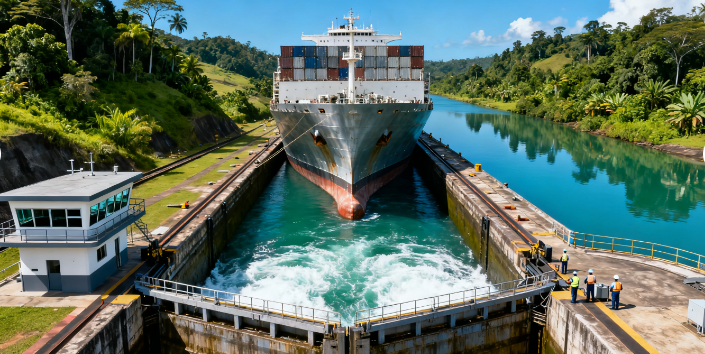
The Panama Canal, linking the Pacific and Atlantic Oceans, achieved strong revenue and transit growth in the 2025 fiscal year, successfully overcoming the effects of drought restrictions from the previous year.
According to unaudited preliminary data, in the 2025 fiscal year, the number of vessel transits through the Panama Canal reached 13,404, representing a 19.3% year-on-year increase, a significant rise from the 11,240 transits in the previous fiscal year. Among these transits, there were 3,342 transits by Neopanamax vessels and 10,062 transits by Panamax vessels. This growth signifies a robust rebound in canal operations from the low point in the 2024 fiscal year when severe drought restrictions led to only 9,936 transits, a 29% decrease from the 2023 fiscal year.
Data shows that the total cargo volume handled by the Panama Canal in the 2025 fiscal year reached 489.1 million PC/UMS tons, a 15.6% increase year-on-year. Neopanamax vessels contributed 253.6 million tons, while Panamax vessels handled 235.5 million tons, highlighting the continued significant role these two vessel types play in global connectivity.
Financially, the performance of the Panama Canal in the 2025 fiscal year was equally impressive. Total revenue reached 5.705 billion balboas, a 14.4% year-on-year increase; net profit stood at 4.134 billion balboas, exceeding expectations and representing a 20.21% increase from the same period last year. The Panama Canal Authority stated that this performance confirms the canal's outstanding financial and operational strength in a challenging global environment, along with its efficient resource allocation capabilities.
In terms of market dynamics, container and liquefied petroleum gas (LPG) transport were the primary growth drivers in the 2025 fiscal year, while dry bulk shipping continued its recovery. However, liquefied natural gas (LNG) vessel performance fell short of expectations, primarily influenced by international shipping market rates. Revenue performance was also impacted by some unique factors, including revenues of at least 1 billion balboas from "advance loading" operations and a medium-term lockage slot allocation plan that helped mitigate the impact of reduced LNG transits.
With a solid financial foundation and excellent operational results, the Panama Canal has strategically prepared for a series of significant investments planned to commence in 2026. These investments aim to enhance the water supply capacity and long-term competitiveness of this intercontinental waterway, ensuring its continued efficient service to global maritime trade.
